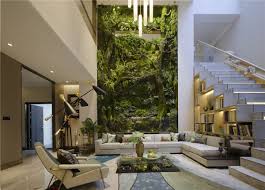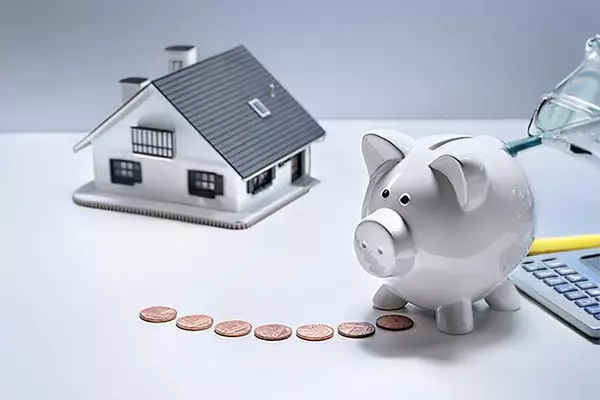Discover the Secret to a Healthier Home: How Biophilic Design is Revolutionizing Modern Living

Welcome to our latest blog post! As your trusted real estate agents, we're dedicated to discovering emerging trends that enhance your living experience, add value to your property, and create a healthy environment for you and your family. Imagine stepping into a space where the tranquility of nature seamlessly blends with the comforts of home. Welcome to the world of biophilic design—a transformative trend focused not just on aesthetics, but on enhancing your well-being, productivity, and overall quality of life. Derived from the Greek term meaning "love of life," biophilia is all about nurturing our innate connection with nature.
What is Biophilic Design?
Biophilia, a term popularized by the renowned biologist E.O. Wilson, refers to the inherent human inclination to connect with nature. Biophilic design builds on this connection by integrating natural elements into architectural and interior design. This trend emphasizes incorporating features such as natural light, greenery, water elements, and organic materials to create environments that foster well-being and harmony with the natural world.

Biophilia and Green Architecture
Biophilic architecture is similar to green architecture, but there are key differences. Green architecture focuses primarily on sustainability and decreasing a building’s environmental impact, such as through energy efficiency and the use of recycled materials. In contrast, biophilic architecture emphasizes increasing the connection to the natural world within built environments. It’s about creating spaces that evoke the positive feelings of being in nature. In the picture above, I have created a split screen image contrasting biophilic design and green design. The biophilic side (left side) features natural elements indoors, while the green design side (right side) showcases modern, energy-efficient architecture.

Why is Biophilic Design Gaining Popularity?
- Rising Interest in Sustainability
Increasing interest in environmental issues, climate change, and sustainability has drawn attention to biophilic design. Customers who value sustainability are driving this trend as they look for ways to incorporate eco-friendly practices into their homes and offices.
- Enhancing Remote Workspaces and improving Lifestyles
Incorporating natural elements into home offices can improve mood, reduce stress, and increase productivity. Studies have shown that by incorporating nature into your work environment it can improve well being by 13% and productivity by 8%. This also works for children. A study out of Denmark showed children that are exposed to more naturein their lives have 55% fewer mental health problems later in life.

- Attractive Office Environments
Biophilic design can make office environments more appealing, potentially reducing employee turnover and boosting productivity. A workplace that integrates natural elements can create a more pleasant and inspiring atmosphere. One of the best examples of this on a large scale is the Apple Park also known as Apple 2 headquarters in Cupertino. The design hides the roads and parking spaces underground. and uses only glass for its walls giving the employees views of the inner courtyard as well as of the landscape facing the exterior of the building. Another example of this is right here in Seatle with the Amazon's Sphere in downtown Seattle.
Key Elements of Biophilic Interior Design

- Live Plants: Live plants offer visual appeal and increase oxygen levels indoors. This can include potted indoor plants and fresh flowers, which add color and life to any space.

- Moss Walls: I have talked about these living walls in a previous post. Moss walls are effective at noise absorption while requiring less care than many indoor plants. They provide a unique and natural aesthetic to interiors. Check out making your own moss wall at https://trendspotinc.com/25-steps-create-diy-moss-wall-garden. It would make a great family project.
- Aquariums: Aquariums with live fish require daily care, but offer great visual interest. They can serve as focal points that bring a sense of tranquility to a room.
 Water Features: Indoor water fountains provide soothing white noise, enhancing the peaceful ambiance of both homes and offices. One great example of this is the waterfall in the Singapore Airport. If big is not your thing LOL then a small fountain on your porch or backyard will create the same atmosphere.
Water Features: Indoor water fountains provide soothing white noise, enhancing the peaceful ambiance of both homes and offices. One great example of this is the waterfall in the Singapore Airport. If big is not your thing LOL then a small fountain on your porch or backyard will create the same atmosphere.
- Natural Light: Maximize natural light with skylights and effective window designs. Keep windows unblocked and open them when weather permits to allow fresh air to flow through. If you are not able to change your natural lighting in your home, use lightingfixtures made from natural fibers like wood and bamboo.
- Air Flow: High-volume, low-speed (HVLS) ceiling fans increase airflow, creating the sensation of a light breeze and keeping the air fresh.

- Outdoor Views: Design spaces that overlook green areas or bodies of water to maintain a visual connection with nature. Singapore’s Khoo Teck Puat Hospital (KTPH) might well be the most biophilic hospital in Asia. Among its many biophilic features are its walls, which are designed to channel winds and enhance the airflow of the building by 20-30%. It also provides views of lush gardens and water featrues from the rooms. Studies have shown that have more nature surrounding the hospital interiors lower cortisol levels, blood pressure and pulse rate, and can have a positive impact on physical health and quality of life. It also speeds upi the recovery timeline.

How Can I Incorporate Biophilic Design in My Home?
Here are a few suggestions to help you bring biophilic design into your home or office:
- Use Natural Materials: Integrate materials like wood, stone, and bamboo into your decor.
- Nature-Inspired Interiors: Opt for wallpaper with leaf patterns or floral motifs.
- Maximize Natural Light: Increase natural light with larger windows or skylights.
- Improve Air Circulation: Use high-quality ventilation systems or HVLS fans to enhance airflow.
- Add Water Features: Consider incorporating indoor fountains or aquariums.
- Embrace Earth Tones: Decorate with colors inspired by nature, such as greens, browns, and blues.
- Display Nature Images: Hang paintings or photographs depicting natural scenes to create a calming atmosphere.
Life is pretty stressful, Incorporating biophilic design into your home can significantly reduce stress and enhance well-being. By adding natural elements like plants, natural light, and organic materials, you create a serene environment that promotes relaxation. Which is probably something we all need.
Categories
- All Blogs (105)
- Inheritance & Estate Planning (4)
- Auburn real estate (12)
- Bonney Lake Housing Market (4)
- Bonney Lake real estate (12)
- Buyer & Seller Advice (13)
- closing a home sale in Washington (7)
- common mistakes that delay real estate closings (3)
- contingent offer pros and cons Pierce County (1)
- Contingent Offers Explained (1)
- Downsizing & Retirement Living (3)
- Home Buying Advice (3)
- home closing tips Lake Tapps (6)
- home sale contingency Lake Tapps (2)
- Home Selling Advice (15)
- Home Selling Strategies (15)
- how escrow works when buying a house (2)
- how to protect your funds during a home purchase (1)
- Lake Tapps Real Estate (13)
- leaving home to kids (2)
- Pierce County Real Estate (14)
- Pierce County Real Estate Tips (12)
- Real Estate Closing Process (4)
- Real Estate Market Trends (9)
- real estate professionals in Western Washington (7)
- Real Estate Tips (14)
- real estate wire fraud prevention (1)
- senior living (3)
Recent Posts











If you haven't subscribed to our newsletter, you're missing out on great stories like the one above that could be coming right to your inbox every few weeks.
Please use the form to request a subscription.
